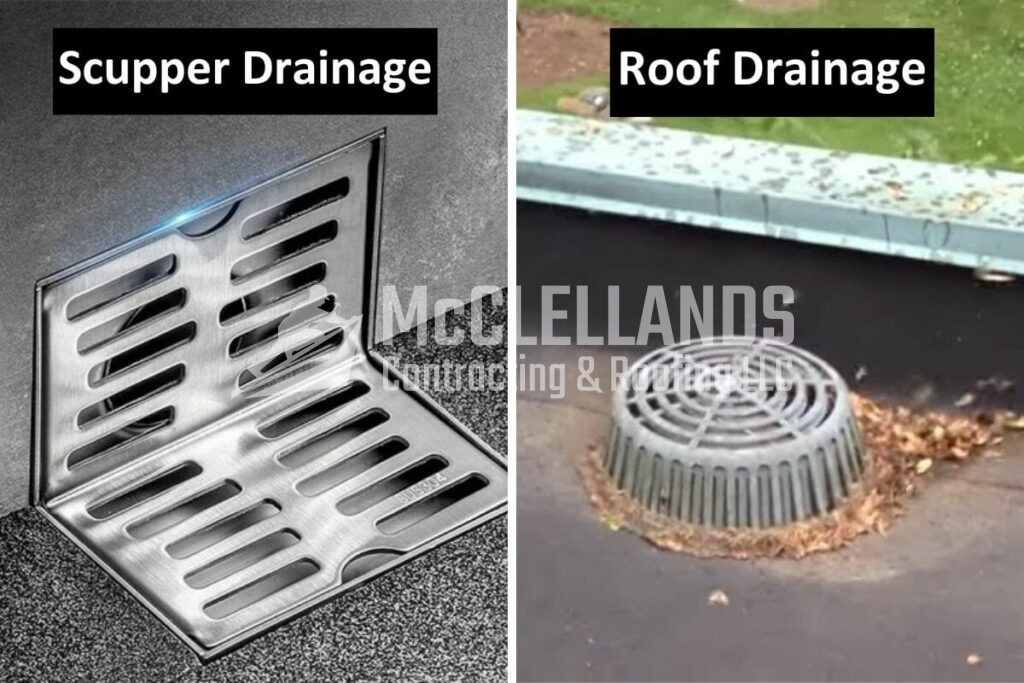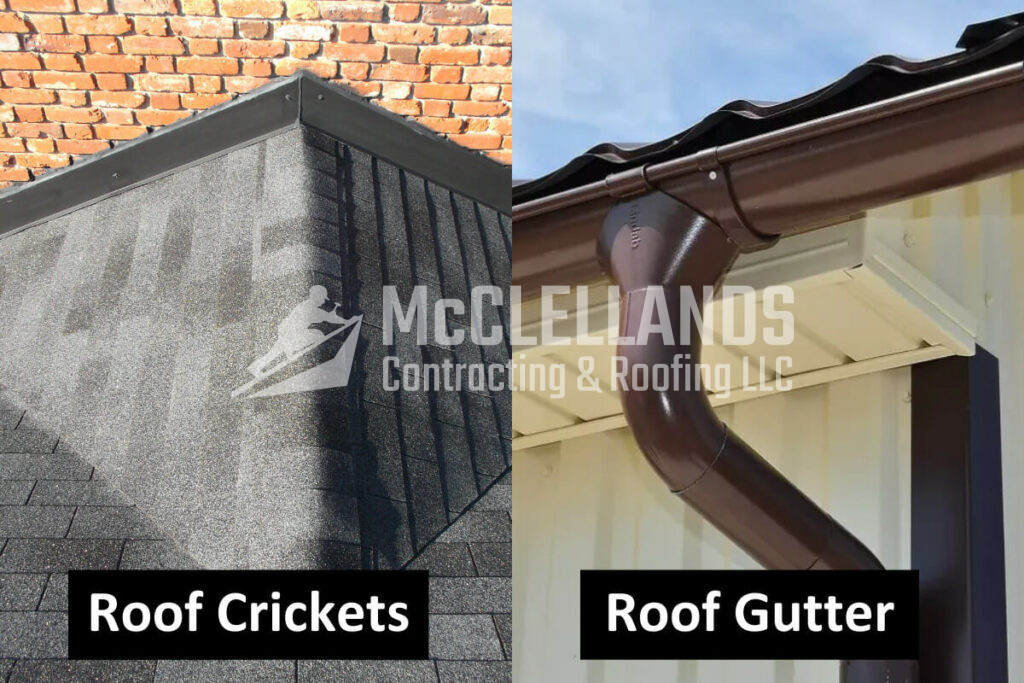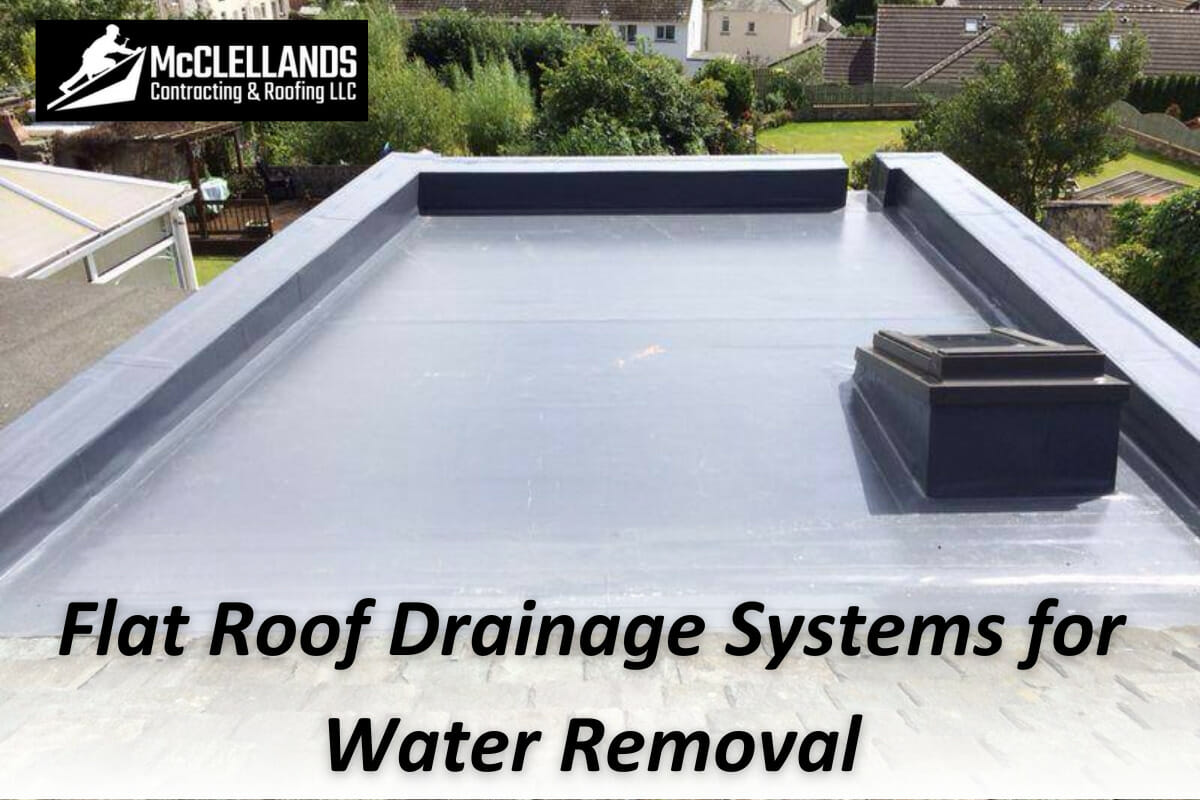Flat roofs have gained popularity on commercial buildings, warehouses, and modern homes. However, one of the common challenges flat roofs face is proper drainage. Without an effective drainage system, flat roofs can experience issues like ponding water, which can lead to structural damage and leaks.
In this guide, we will explore the different options for flat roof drainage systems and how they help remove water.
Everything You Need To Know About Flat Roof Drainage
When it comes to flat roofs, proper drainage is essential to ensure the longevity and performance of the roof. Flat roof drainage systems are designed to collect and channel water away from the roof’s surface, preventing water accumulation and potential damage. In this guide, we will discuss the different types of flat roof drainage systems and their advantages.
Understanding Flat Roof Drainage
Flat roofs typically have three main options for drainage: scuppers, roof overflow drains, and roof drains. In this section, we’ll define some key points of flat roof drainage. The choice of a drainage system depends on various factors such as roof design, building structure, and local building codes.
#1 Scupper Drainage
Scuppers are openings or channels located at the low points of a flat roof. They allow water to drain off the roof and into the downspouts and gutters. Scuppers are often paired with overflow drains to prevent water from accumulating and causing damage to the roof. Proper maintenance of scuppers is crucial to ensure their effectiveness in draining water.

#2 Roof Overflow Drains
Roof overflow drains serve as secondary drainage systems. They are typically installed alongside scuppers to handle excessive water during heavy rainfalls. Overflow drains help prevent water from backing up on the roof, reducing the risk of leaks and structural damage. These drains are usually connected to the building's plumbing system or directed to a separate drainage area.
#3 Roof Core Sample
A roof core sample is a diagnostic technique used to assess the layers and composition of a flat roof. Professionals can determine the roof slope by taking a core sample and identifying potential issues such as insufficient insulation or structural problems affecting drainage. Understanding the roof's core composition helps in planning the appropriate drainage system.
#4 Roof Deck Slope
The slope of the roof deck plays a significant role in determining how effective a flat roof will be at drainage. It refers to the intentional angle or slope built into the roof deck to facilitate water runoff. The roof deck slope can be achieved through tapered insulation or structural modifications. In cases where the slope is insufficient, adjustments may be necessary to improve drainage.
#5 Roof Drain System
Roof drains are common on flat roofs where water needs to be channeled to a specific location. These drains are positioned in low areas on the roof and are connected to a plumbing system or underground drainage. Proper installation and maintenance of roof drains are vital to ensure efficient water flow and prevent blockages.
#5 Roof Gutter Drainage System
In some cases, flat roofs may incorporate a traditional gutter system for drainage. Gutters are installed along the roof's edges, collecting water and directing it to downspouts. The downspouts then carry the water from the gutter down to the ground or a designated drainage area. This gutter system is commonly used when the flat roof is part of a larger building structure with sloped roofs that already have gutters in place. It provides an effective way to channel water away from the flat roof surface.

#6 Roof Crickets
Roof crickets, also known as saddles, are structures built on the roof to divert water away from a specific area. They are typically used on larger flat roofs where water pooling or accumulation is a concern. Roof crickets are triangular in shape and installed on the upslope side of obstacles such as chimneys or vents. They help redirect water around these obstacles and promote proper drainage.
Benefits of Proper Flat Roof Drainage
Having a well-designed and properly functioning flat roof drainage system offers several benefits:
- Prevents ponding water: Ponding water is a significant issue for flat roofs. It adds excess weight and can lead to structural damage, leaks, and premature roof deterioration. A reliable drainage system prevents the accumulation of water, reducing the risk of these problems.
- Extends the roof’s lifespan: Proper drainage ensures that water does not linger on the roof’s surface. By effectively managing roof runoff, the drainage system helps maintain the roofing material's integrity, extending the roof's lifespan.
- Prevents leaks: Flat roofs are prone to leaks, especially if water is allowed to accumulate. A well-designed drainage system prevents water from pooling and seeping into the roof’s structure, minimizing the risk of leaks and water damage to the interior of the building.
- Preserves structural integrity: Excessive water accumulation on a flat roof can lead to structural issues over time. By promptly draining water away from the roof, the drainage system helps preserve the structural integrity of the building.
Also Read- FLAT ROOF REPAIR: DO IT YOURSELF OR LEAVE IT TO THE PROS?
Final Thoughts
Proper flat roof drainage is essential for maintaining the integrity and longevity of the roof. Whether through scuppers, roof overflow drains, roof drains, or a standard gutter system, a well-designed drainage system effectively manages water runoff and prevents water-related issues. It is important to consult with roofing professionals or experts to determine the most suitable drainage system for your specific flat roof design and local building codes.
At McClellands Contracting and Roofing LLC in Pittsburgh, we specialize in providing professional roofing solutions. Our team of experts is well-versed in the importance of flat roof drainage and can help you ensure that your roof is in excellent condition for years to come.
So, if you're looking for reliable flat roofing contractor in Pittsburgh, don't hesitate to reach out to us. We'll be more than happy to assist you in installing an efficient and compliant drainage system for your flat roof. Your roof's health and longevity are our top priorities!
Call us today to schedule a consultation, or learn more about how we can help you with your roofing needs at (412) 353-5660.
FAQs
A. It is recommended to inspect your flat roof drainage system at least twice a year, preferably before and after the rainy season. Regular inspections help identify any potential issues and ensure the proper functioning of the system.
A. While some maintenance tasks can be performed by the building owner or facility manager, it is advisable to consult with roofing professionals or experts for the installation of a flat roof drainage system. They have the knowledge and expertise to ensure proper installation and functionality.
A. If you notice ponding water on your flat roof, it is important to address the issue promptly. Contact a roofing professional to assess the drainage system and determine the best course of action to resolve the problem.
A. Yes, local building codes and regulations often govern the design and installation of flat roof drainage systems. Familiarizing yourself with these codes and ensuring compliance when planning and implementing a drainage system is crucial.
A. Regular maintenance of your flat roof drainage system is important. Keep the drains, scuppers, and gutters clear of debris, and ensure proper flow of water. Remove any obstructions and promptly address any issues to prevent potential problems.
Remember, proper flat roof drainage is crucial for the overall health and longevity of the roof. To ensure an effective and compliant drainage system is installed, it’s recommended that you consult with roofing professionals or experts.




